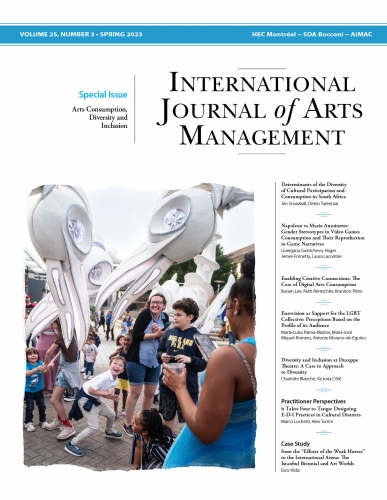From the “Efforts of the Weak Horses” to the International Arena: The Istanbul Biennial and Art Worlds
Product: Article
$21.00 CA
Esra Yıldız
Esra Yıldız is an Associate Professor in the Department of Arts and Cultural Management at İstanbul Bilgi University and director of the Cultural Management MA Program. She received her bachelor’s degree in sociology and environmental engineering and master’s degree (İstanbul Technical University) in art history. She pursued her postdoctoral studies at Humboldt-Universität zu Berlin and EHESS (Paris). She is a board member of AICA International and the president of AICA Turkey. Yıldız is also the director of several documentaries and short films.
ABSTRACT
This article discusses the role of the Istanbul Biennial in the city’s journey to becoming a center of power in Turkey’s cultural and artistic scene and its impact on the representation of contemporary art and artists from Turkey in global art institutions applying content analysis as methodology and using primary sources such as Istanbul Biennials and exhibition catalogs, archival documents, statements of biennial curators and artists. The Istanbul Biennial gained recognition as an artistic event after the 1990s and has had a gradually growing influence on Turkey’s contemporary art scene. As the growing number of biennials in different cities around the world every year shows, the biennial is beginning to surpass events in museums and similar art institutions in importance as an exhibition format. Biennials also regulate the contemporary cultural and artistic scene of the countries in which they are organized and tend to establish themselves as a hegemonic power. The Istanbul Biennial’s impact illustrates how Istanbul has become a center of attraction both in Turkey’s and the world’s artistic and cultural scene. The article will investigate the place of the Istanbul Biennial in the global art world and its impact on biennial exhibitions as one of the most hegemonic exhibition formats.
KEYWORDS
Istanbul Biennial; Contemporary Art; Art Market; Hegemony; Globalization; Politics of Art; Art Historiography

